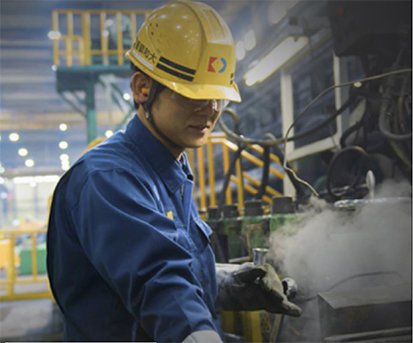Remote monitoring is making waves in manufacturing. Here is an exploration of its key tools, and how it fits into a COVID-19 context.
By Arjun Chandar, Founder and Chairman of IndustrialML, Inc.
Allowing for efficient operations and a reduced number of employees on the production floor, forward-thinking factory teams across the world are embracing remote monitoring. In recent years, there have been significant improvements in connectivity which have allowed remote monitoring techniques to improve, and become essential for factories operating in a post COVID-19 world. Let’s take a look at why remote monitoring matters, some remote monitoring tools, why they are secure, and what effect COVID-19 could have for the future of remote monitoring.

Many organizations are losing the depth of engineering knowledge that they previously had, due to the retirement of older generations who have extensive engineering experience, and so remote monitoring becomes even more important to retain valuable workers. Remote monitoring also enables organizations to improve service-level agreements. Plenty of organizations already do offer service contracts, but service tends to follow an equipment failure rather than being preventive. This is part of a larger trend, whereby manufacturers offer maintenance as part of customer support to asset owners, which allows the original equipment manufacturer (OEM) to feel that they can rely on the person running the line due to the remote monitoring capabilities. With continuous updates on the health of equipment, organizations can evolve from reactive maintenance to predictive maintenance to address problems before they happen, and increase operational equipment effectiveness.
Remote monitoring is usually done through video surveillance, accompanied by quantitative data which can be collected in real time through predone calculations, and fed to the person monitoring. Real time alerts stop the person conducting the remote monitoring from constantly having to stare at a screen, and instead they are alerted when an error has occurred so that they can review the issue immediately.
As many manufacturing systems have migrated to the cloud, with SaaS architecture, manufacturers don’t necessarily need to have a special VPN to have access to the company network—high quality video streaming along with large amounts of quantitative data from the factory is eminently possible. In fact, more and more data on the factory floor is now being tracked and streamed into central repositories than ever before.
Machine learning (ML) can be incorporated into this environment to supplement monitoring and alerting by helping factories determine what the right recommendations are. For an ML algorithm to be effective, it just needs to be fed with sufficient historical data to know how to track what the particular alert was, what was the root cause of the alert, and what was the corrective action that was taken to fix it.
Factories can also use online monitoring to track equipment health while scheduling maintenance at an appropriate interval. The data gathered during this monitoring also allows team members to understand the performance and evolution of the equipment over its lifetime. This information can be used to develop a model for predictive maintenance on how long that troubled equipment can safely run.
The cloud security standards that accompany remote monitoring SaaS architectures, including real time encryption and end to end user authentication, ensure a high degree of security. However, manufacturing leaders may be asking: How can employees be trusted to listen to the instructions of their peers when they are not physically there? This is a common concern amongst any industry dealing with remote-working employees, and the simple answer is that trust has to be established. In a recent harvard business review, 34% of workers said that their supervisors “expressed a lack of confidence in their work skills.” Leaders leveraging remote monitoring should avoid micromanaging their employees and show them that they trust them to do their jobs. Furthermore, managers who take advantage of remote monitoring need to be people with that particular industry expertise, so that employees have the necessary guidance and support.
The pandemic has rapidly accelerated the pre-existing pressure on industrial organizations to undergo a digital transformation and implement Industry 4.0 strategies. An IoT plug-and-play model for remote monitoring can be instrumental in ensuring business continuity, minimizing economic damage, and providing employee safety and security.
There are many innovative ways in which remote monitoring can improve employee safety in the context of COVID-19—it can be used to help companies ensure employees are keeping safe distances. Companies could also give their employees wearable trackers to log the contacts made during a shift. Organizations who are trying to reduce costs whilst increasing productivity can find a great resource in remote monitoring technologies as they facilitate the ongoing needs for reduced capacity.

Arjun Chandar is Founder and Chairman of IndustrialML, Inc.
In this episode, I sat down with Beejan Giga, Director | Partner and Caleb Emerson, Senior Results Manager at Carpedia International. We discussed the insights behind their recent Industry Today article, “Thinking Three Moves Ahead” and together we explored how manufacturers can plan more strategically, align with their suppliers, and build the operational discipline needed to support intentional, sustainable growth. It was a conversation packed with practical perspectives on navigating a fast-changing industry landscape.